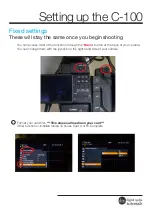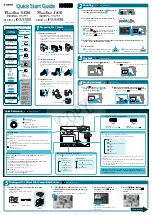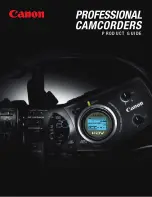
SVS-VISTEK
Feature description
47
L ED s i n Fl a s h M od e
Most LED lights can cope with currents higher than specs. This gives you
higher light output when light is ON. Please refer to your LED specs if LED
overdrive is permitted.
By controlling the duty cycle the intensity of light and current can be
controlled. See sequencer example how to adjust the values in the
GenICam tree for strobe control.
Current
“time ON” within a 1 Sec
PWM %
0,75 A
500 ms
50 %
1 A
300 ms
33,3 %
2 A
70 ms
7 %
3 A
40 ms
4 %
Example: If pulse is 1.5 A the max. “on” time is 150 mSec. This translates
to “off” time is 850 mSec. The sum of “time on” and “time off” is 1000
mSec = 1 Sec.
NOTICE
The shorter the „time on“ – the higher current can be
used when driving LEDs with current higher than spec
Strobe vocabulary
For an example how to enable and adjust the integrated strobe controller
refer to
sequencer
. Times and frequencies are set in tics. 1 tic = 15ns.
Ex p os u r e D e l a y
A tic value, representing the time between the (logical) positive edge of
trigger pulse and start of integration time.
Str ob e P ol a r i ty
Positive or negative polarity of the hardware strobe output can be
selected.
Str ob e D u r a ti o n
The exposure time of LED lights can be set in
tics
. The min duration is 1
µ
sec. The longest time is 1 second.
Str ob e D e l a y
The delay between the (logical) positive edge of trigger pulse and strobe
pulse output.
6.3.4
Sequencer
The sequencer is used when different exposure settings and illuminations
are needed in a row.
Values to set
Description
Sequencer interval
Duration of the interval
Exposure start
Exposure delay after interval start
Summary of Contents for ECO Series
Page 5: ...SVS VISTEK Safety Messages Contents of Camera Set 5 ...
Page 94: ...SVS VISTEK Dimensions 94 ...
Page 96: ...SVS VISTEK Dimensions 96 ...
Page 97: ...SVS VISTEK Dimensions 97 ...
Page 98: ...SVS VISTEK Dimensions 98 ...
















































